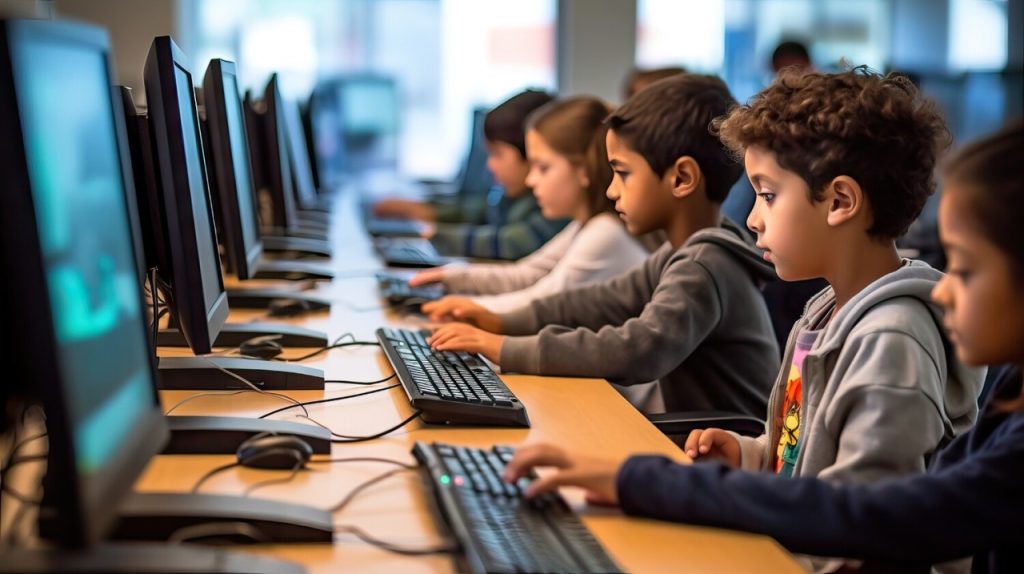JAKARTA, incaschool.sch.id – In today’s digital age, technology integration has become a vital component of effective teaching and learning. By incorporating technology into the classroom, educators can create engaging, interactive, and meaningful learning experiences that resonate with students. This article explores the significance of technology integration in education and offers practical strategies for enhancing classroom experiences to promote real, fun, and lasting learning.
The Importance of Technology Integration

1. Engaging Students
Technology has the power to capture students’ attention and stimulate their interest in learning. By using various digital tools and resources, educators can create dynamic lessons that motivate students to participate actively.
2. Personalizing Learning
Technology allows for personalized learning experiences tailored to individual student needs. With adaptive learning platforms, educators can provide targeted instruction and resources that cater to diverse learning styles and paces.
3. Fostering Collaboration
Integrating technology in the classroom encourages collaboration among students. Tools such as collaborative documents, discussion forums, and project management apps enable students to work together, share ideas, and learn from one another.
4. Preparing for the Future
Incorporating technology into education equips students with essential skills for the 21st century. Digital literacy, critical thinking, and problem-solving skills are crucial for success in today’s workforce, and technology integration helps students develop these competencies.
Strategies for Effective Technology Integration
1. Utilize Interactive Tools
Interactive tools can transform traditional lessons into engaging, hands-on experiences. Educators can leverage various technologies to create an interactive learning environment.
Action Steps
- Use Smartboards: Incorporate smartboards to facilitate interactive lessons, allowing students to participate actively in discussions and activities.
- Incorporate Gamification: Use educational games and quizzes to make learning fun and competitive, encouraging students to engage with the material.
- Implement Virtual Reality (VR): Explore VR applications that allow students to experience immersive learning environments, such as virtual field trips or simulations.
2. Leverage Online Resources
The internet offers a wealth of resources that can enhance classroom instruction. Educators should take advantage of online platforms to supplement their teaching.
Action Steps
- Utilize Educational Websites: Incorporate reputable educational websites and platforms that provide interactive lessons, videos, and assessments.
- Encourage Online Research: Teach students how to conduct research using online databases and resources, fostering critical thinking and information literacy.
- Create Multimedia Presentations: Encourage students to use tools like Prezi or Google Slides to create multimedia presentations that showcase their understanding of topics.
3. Foster Collaborative Learning
Technology can enhance collaboration among students, enabling them to work together on projects and exchange ideas efficiently.
Action Steps
- Use Collaborative Platforms: Implement tools like Google Workspace or Microsoft Teams to enable students to collaborate on group projects in real time.
- Encourage Peer Feedback: Encourage students to provide feedback on each other’s work by using online discussion boards or shared documents.
- Organize Virtual Group Activities: Organize virtual group activities or discussions that foster teamwork and enhance communication skills.
4. Implement Flipped Classroom Models
The flipped classroom model allows students to engage with instructional content at their own pace, freeing up classroom time for active learning and collaboration.
Action Steps
- Assign Video Lectures: Provide video lectures or online tutorials for students to watch at home, allowing them to come to class prepared for discussion and activities.
- Facilitate Hands-On Activities: Use class time for hands-on activities, group discussions, and problem-solving exercises that reinforce the concepts learned at home.
- Encourage Reflection: Have students reflect on their learning experiences through online journals or discussion posts, promoting deeper understanding.
5. Integrate Assessment Technology
Technology can enhance assessment practices, providing educators with valuable insights into student learning and progress.
Action Steps
- Use Online Quizzes: Implement online quizzes and assessments to gauge student understanding and provide immediate feedback.
- Incorporate E-Portfolios: Encourage students to create digital portfolios that showcase their work, reflections, and growth over time.
- Utilize Data Analytics: Leverage data analytics tools to track student performance and identify areas for improvement, enabling targeted interventions.
6. Provide Professional Development
For effective technology integration, educators must be equipped with the skills and knowledge to use technology effectively in the classroom.
Action Steps
- Offer Training Sessions: Provide professional development workshops focused on technology integration strategies and tools.
- Encourage Peer Collaboration: Foster a culture of collaboration among educators, allowing them to share best practices and resources for technology integration.
- Stay Updated on Trends: Encourage educators to stay informed about emerging technologies and trends in education through webinars, conferences, and online courses.
Conclusion
Technology integration is essential for enhancing classroom experiences and promoting real, fun, and lasting learning. By leveraging interactive tools, online resources, collaborative learning, and innovative assessment practices, educators can create engaging and meaningful learning environments that resonate with students.
As technology continues to evolve, it is crucial for educators to embrace these changes and adapt their teaching methods accordingly. By investing in professional development and fostering a culture of collaboration, schools can ensure that technology integration becomes an integral part of the educational experience.
Ultimately, effective technology integration not only enhances student engagement and learning outcomes but also prepares students for success in an increasingly digital world. Embracing technology as a tool for learning will empower students to thrive in their academic journeys and beyond.
Improve Your Abilities: Explore Our content on Knowledge
Take a Look at Our Latest Article on Science Curriculum!


